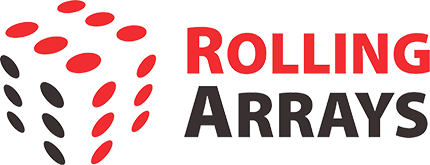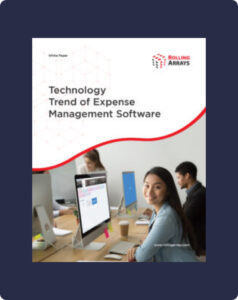
Table of Contents
Resources > Blog > How to Choose Between SAP Enable Now and Rolling Arrays eAuthoring for Your eLearning Needs
How to Choose Between SAP Enable Now and Rolling Arrays eAuthoring for Your eLearning Needs
Published on June 21, 2023

In today’s rapidly evolving and fiercely competitive business landscape, creating and delivering high-quality content to customers and employees has become a critical component of digital transformation strategies for many organisations.
Effective digital content authoring can mean staying ahead of the curve and not falling behind.
Fortunately, an increasing number of B2B SaaS solutions are available to help enterprises achieve their digital content authoring objectives.
This blog post will compare two leading solutions: SAP Enable Now and Rolling Arrays eAuthoring.
These SaaS solutions are designed to help organisations create, manage, and deliver high-quality content more efficiently and effectively.
Whether you’re a content creator, manager, or decision-maker, we aim to provide the information you need to decide which SaaS solution is right for your organisation.
To begin with, let’s go a bit deeper to find out what digital content authoring is.
What is digital content authoring?
Digital content authoring is a process of creating and delivering electronic content for education and training purposes. It can include online courses, e-books, interactive tutorials, and more.
Content creators use specialised authoring tools and software to efficiently design, build, and publish digital content. They may have different needs and preferences depending on their level of expertise, target audience, and desired outcomes.
For example, some content creators may prefer self-service content authoring platforms that allow them to capture tacit knowledge and create good quality courses with multimedia support. In addition, these platforms suit Subject Matter Experts (SMEs) who want to share their expertise without requiring extensive technical skills or professional design assistance.
One example of a self-service content authoring platform is eAuthoring, which more to capture tacit knowledge but yet gives enough features to create a good quality course with multi-media support.
On the other hand, some content creators may opt for more advanced content authoring tools that offer more functionality and customisation options but also have a steeper learning curve. These tools are ideal for professional content creators (people from your L&D team) who want to produce high-end digital content that meets specific standards and requirements.
Some examples of an advanced content authoring tool are Lectora, which gives authors an effective tool for producing HTML5 content.
How to Choose a Digital Content Authoring Software
The first step is to discern your use case: are you a content creator or a subject matter expert (SME)?
For employees:
- Content creators are professionals who have extensive technical skills and design expertise. They want to produce high-end digital content that meets specific standards and requirements. As a result, they may prefer more advanced content authoring tools that offer more functionality and customisation options but also have a steeper learning curve.
- SMEs are experts who have valuable knowledge and experience to share. They want to capture tacit knowledge and create good-quality courses with multimedia support. They may prefer self-service content authoring platforms that allow them to develop digital content without requiring extensive technical skills or professional design assistance.
Once you have identified your use case, you can consider other criteria to help you select a digital content authoring software that suits your needs. Some of these criteria are:
- Ease of use: How effortless is managing, creating, and publishing content with the tool? Can you use it with little training or support?
- Capability: What core learning features does the tool offer? Does it support various media types, interactivity, assessment, feedback, etc.?
- Built-in comment and review tools: Does the tool allow you to collaborate with others on your content? Can you collect feedback from reviewers and learners easily?
- Mobile-ready and responsive: Does the tool produce digital content that can be accessed on any device? Does it adapt to different screen sizes and orientations?
- Fast publishing and maintenance: How quickly can you publish your digital content? How easy is it to update or modify your content after posting?
- Setting up themes and branding: Can you customise the look and feel of your digital content? Can you apply consistent themes and branding across your courses?
- Integration and analytics: Can you integrate your digital content with other platforms or systems? Can you track and measure the performance of your digital content?
Considering these criteria, you can narrow your options and choose a digital content authoring software that meets your expectations.
SAP Enable Now vs eAuthoring: Which One is Right for You?
SAP Enable Now, and eAuthoring are two digital content authoring tools that can help you create and deliver electronic content for education and training purposes. They both have their features, benefits, and drawbacks. So how do you choose the best one for your needs?
The first thing to consider is your use case: are you a content creator or a subject matter expert (SME)?
- Content creators are professionals who have extensive technical skills and design expertise and wish to produce high-end digital content that meets specific standards and requirements.
- SMEs are experts with valuable knowledge and experience to share, and they want to capture tacit knowledge and create good-quality courses with multimedia support.
Another thing to consider is integrating with SAP SuccessFactors Learning Management System (LMS), a cloud-based solution that helps you manage, deliver, and track learning activities.
eAuthoring integrates with SAP SuccessFactors LMS through a real-time integration feature called ePublish, which enables you to publish your digital content automatically to SAP SuccessFactors LMS as SCORM packages or web links. You can also use eReview, which allows you to collect feedback easily from reviewers and learners.
Given that it is initially built for SAP SuccessFactors Learning Management System (LMS), you can leverage eAuthoring’s native integration and seamless compatibility with SAP SuccessFactors LMS to deliver effective and measurable learning outcomes.
SAP Enable Now integrates with SAP SuccessFactors LMS through an add-on called SAP Enable Now Manager, which enables you to publish your digital content directly to SAP SuccessFactors LMS as SCORM packages or web links.
Conclusion
Digital content authoring has become a critical component of digital transformation strategies for many organisations. However, with an increasing number of B2B SaaS solutions available to help organisations achieve their digital content authoring objectives, it can take time to choose the right software.
By discerning your use case, ease of use, capability, built-in comment and review tools, mobile-readiness and responsiveness, fast publishing and maintenance, setting up themes and branding, and integration and analytics, you can narrow your options and select a digital content authoring software that meets your expectations.
Ultimately, the choice will depend on whether you are a content creator or a subject matter expert and your preferred level of functionality and customisation options.





